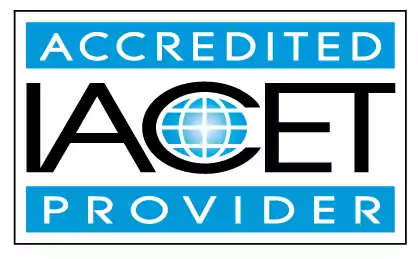Apply strategies caregivers can use to ensure safe sleeping habits and the prevention of SIDS in infants
Central Objective: In early childhood education and child care centers, apply caregiver-focused strategies to ensure safe sleeping habits and prevent SIDS in infants. Supporting Elements: This page provides practical examples caregivers can implement, such as back-to-sleep on a firm mattress, room-sharing without bed-sharing, keeping the sleep area free of loose bedding and soft objects, maintaining appropriate clothing and temperature, offering supervised awake tummy time, and ongoing staff training plus family communication to sustain safe sleep environments and prevent SUIDS.Trainings incorporating this outcome
Proficiency Level
Target Audience
Price
States
Alabama (3) Alaska (3) Alberta (3) Arizona (3) Australia (3) California (3) Colorado (3) Connecticut (3) Delaware (3) District of Columbia (3) Florida (3) Georgia (2) Hawaii (3) Idaho (3) Illinois (1) Indiana (3) Iowa (3) Jamaica (1) Kansas (3) Louisiana (3) Maine (3) Manitoba (1) Maryland (2) Massachusetts (3) Michigan (3) Minnesota (2) Mississippi (3) Missouri (1) Montana (3) Nebraska (3) Nevada (1) New Hampshire (3) New Mexico (3) New York (2) Newfoundland and Labrador (3) North Carolina (2) North Dakota (2) Nova Scotia (3) Ohio (3) Oklahoma (3) Oregon (3) Pennsylvania (1) Prince Edward Island (3) Puerto Rico (1) Quebec (3) Rhode Island (3) Saskatchewan (3) South Dakota (3) Texas (3) Thailand (1) United Kingdom (1) Utah (3) Vermont (3) Virgin Islands (3) Virginia (3) Washington (3) West Virginia (3) Wisconsin (2) Wyoming (2)
6 hours courses
4 hours courses
2 hours courses
 0.2 CEUs
0.2 CEUs online
4.6/5
Related Outcomes
- Give examples of strategies caregivers can use to ensure safe sleeping habits and the prevention of SIDS/SUIDS in infants.
- Explain appropriate crib guidelines for caregivers to ensure safe sleep for infants and young toddlers.
- Give examples of strategies caregivers can use to prevent biting.
- Describe how caregivers can help to prevent sudden infant death syndrome.
- Give examples of strategies to prevent traumatic brain injuries in infants and young children.
- Identify strategies to ensure appropriate infant and toddler supervision.
- Identify the risk factors that contribute to Sudden Infant Death Syndrome (SIDS), and what guidelines can prevent it.
- Select strategies to ensure appropriate infant and toddler supervision.
- Describe the use of safe sleep practices.
- Identify safe practices with infants including SIDS, Abusive Head Trauma, and SBS.
- Describe common myths and facts about safe sleep for infants and young toddlers.
- Explain the use of safe sleep practices.
- Define strategies for prevention of obesity in children including the role of the educator and why prevention is important.
- Discuss Sudden Infant Death Syndrome and identify preventive measures
- Give examples of time management strategies administrators can use to balance record keeping and supervising.
- List strategies for trainers on how to apply DEI practices.
- Identify strategies and practices for preventing shaken baby syndrome and abusive head trauma in the child care setting
- Identify safe practices in the prevention of and response to food and other allergies in the childcare environment.
- Describe Sudden Infant Death Syndrome and identify preventive measures.
- List safety risks for infants and toddlers and strategies to diminish these risks.
Related Articles
- Online SIDS Training with Certificate: Texas
- Child care education
- The Importance of SIDS Training for Child Care Providers
- The Role of Safe Sleep Practices in Reducing SIDS Risk
- A Whisper in the Night: The Emotional Journey of Parents Navigating the Unknowns of SIDS
- SIDS Science: What Every Parent Needs to Know About Safe Sleep
- Don’t Snooze on SIDS: Safe Sleep Tips for Infants That Every Caregiver Should Know
- Basic Health and Safety Training for Child Care Providers
- SIDS Certification: Why Every Childcare Provider Needs It
- Protecting Infants and Preventing Sleep-Related Incidents
- Why Safe Sleep Training Matters: Preventing SIDS and Promoting Infant Well-Being
- Safe Sleep Training for Infants: Prevent SIDS
- SIDS Awareness: Safe Sleep Training for New Parents
- SIDS Certification 101: Infant Caregivers Need this to Save Lives
- Legal Steps, SIDS Certification, and Safety Training in Daycare Made Easy
- Creating a SIDS-Safe Environment: A Practical Checklist for Your Facility
- SIDS Safety Checklist for Your Facility
- From Tummy Time to Safe Sleep: SIDS and Safe Sleep Online Training for MD Childcare
- Safe Sleep Practices for Infants in Child Care